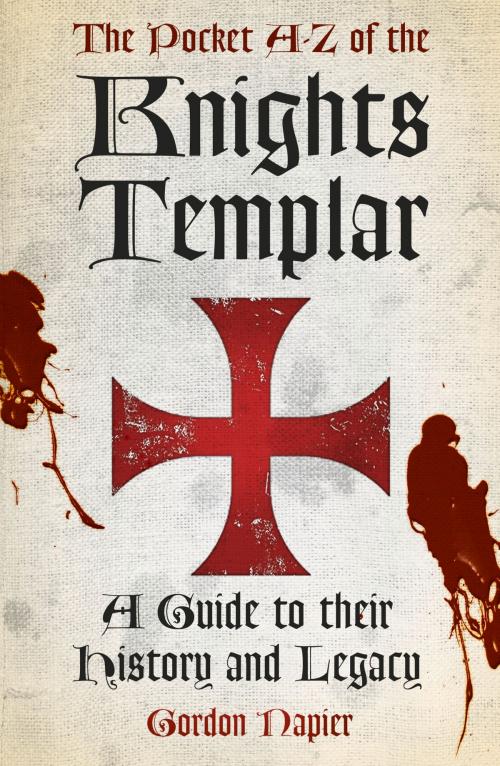The Pocket A–Z of the Knights Templar
A Guide to Their History and Legacy
Nonfiction, History, European General, Religion & Spirituality, Christianity, General Christianity| Author: | Gordon Napier | ISBN: | 9780750958547 |
| Publisher: | The History Press | Publication: | April 7, 2014 |
| Imprint: | Spellmount Publishers Ltd | Language: | English |
| Author: | Gordon Napier |
| ISBN: | 9780750958547 |
| Publisher: | The History Press |
| Publication: | April 7, 2014 |
| Imprint: | Spellmount Publishers Ltd |
| Language: | English |
From Aaron to Zion, an invaluable reference of the people, places, and themes of the Crusades, the Knights Templar, and their legacyThe Poor Fellow-Soldiers of Christ and of the Temple of Solomon, popularly known as the Knights Templar or the Order of the Temple, were among the most famous of Christian military orders. The order existed for about two centuries in the Middle Ages, and was created after the First Crusade of 1096 to ensure the safety of European pilgrims to Jerusalem after its conquest. Officially endorsed by the Catholic church in 1129, the order became a favored charity across Europe, and grew rapidly. Templar knights, easily recognizable in their white mantle with a distinct red cross, were some of the best equipped, trained, and disciplined fighting units of the Crusades. Non-warrior members of the order managed a large economic infrastructure throughout Christendom, innovating many financial techniques that were an early form of banking. When the Holy Land was lost and the Templars suffered crushing defeats, support for the Order faded. Rumors about the secret initiation ceremony created mistrust, and King Philip IV of France, deeply in debt to the order, began pressuring Pope Clement V to take action. On October 13, 1307 King Philip had many of the order's members in France arrested, tortured into "confession," and burned at the stake. In 1312, Pope Clement forcibly disbanded the order. The sudden disappearance of a major part of the European infrastructure gave rise to speculation and legends, which have kept the name "Templar" alive.
From Aaron to Zion, an invaluable reference of the people, places, and themes of the Crusades, the Knights Templar, and their legacyThe Poor Fellow-Soldiers of Christ and of the Temple of Solomon, popularly known as the Knights Templar or the Order of the Temple, were among the most famous of Christian military orders. The order existed for about two centuries in the Middle Ages, and was created after the First Crusade of 1096 to ensure the safety of European pilgrims to Jerusalem after its conquest. Officially endorsed by the Catholic church in 1129, the order became a favored charity across Europe, and grew rapidly. Templar knights, easily recognizable in their white mantle with a distinct red cross, were some of the best equipped, trained, and disciplined fighting units of the Crusades. Non-warrior members of the order managed a large economic infrastructure throughout Christendom, innovating many financial techniques that were an early form of banking. When the Holy Land was lost and the Templars suffered crushing defeats, support for the Order faded. Rumors about the secret initiation ceremony created mistrust, and King Philip IV of France, deeply in debt to the order, began pressuring Pope Clement V to take action. On October 13, 1307 King Philip had many of the order's members in France arrested, tortured into "confession," and burned at the stake. In 1312, Pope Clement forcibly disbanded the order. The sudden disappearance of a major part of the European infrastructure gave rise to speculation and legends, which have kept the name "Templar" alive.















